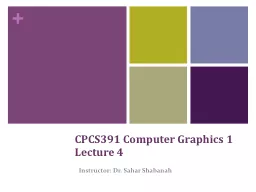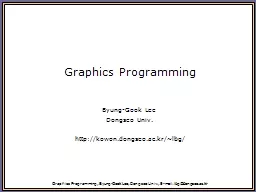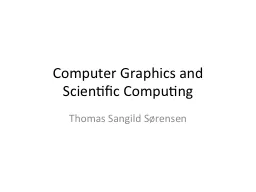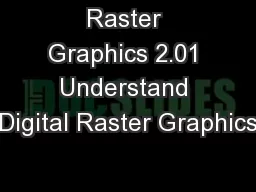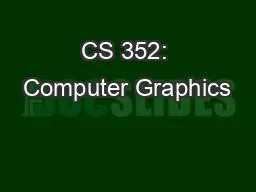PPT-CPCS391 Computer Graphics 1
Author : test | Published Date : 2016-08-06
Lecture 4 Instructor Dr Sahar Shabanah Side Effects of Scan Conversion The most common side effects when working with raster devices are Unequal intensity Overstrike
Presentation Embed Code
Download Presentation
Download Presentation The PPT/PDF document "CPCS391 Computer Graphics 1" is the property of its rightful owner. Permission is granted to download and print the materials on this website for personal, non-commercial use only, and to display it on your personal computer provided you do not modify the materials and that you retain all copyright notices contained in the materials. By downloading content from our website, you accept the terms of this agreement.
CPCS391 Computer Graphics 1: Transcript
Download Rules Of Document
"CPCS391 Computer Graphics 1"The content belongs to its owner. You may download and print it for personal use, without modification, and keep all copyright notices. By downloading, you agree to these terms.
Related Documents

